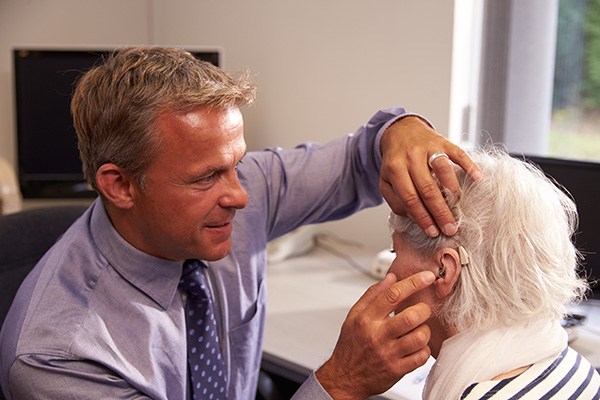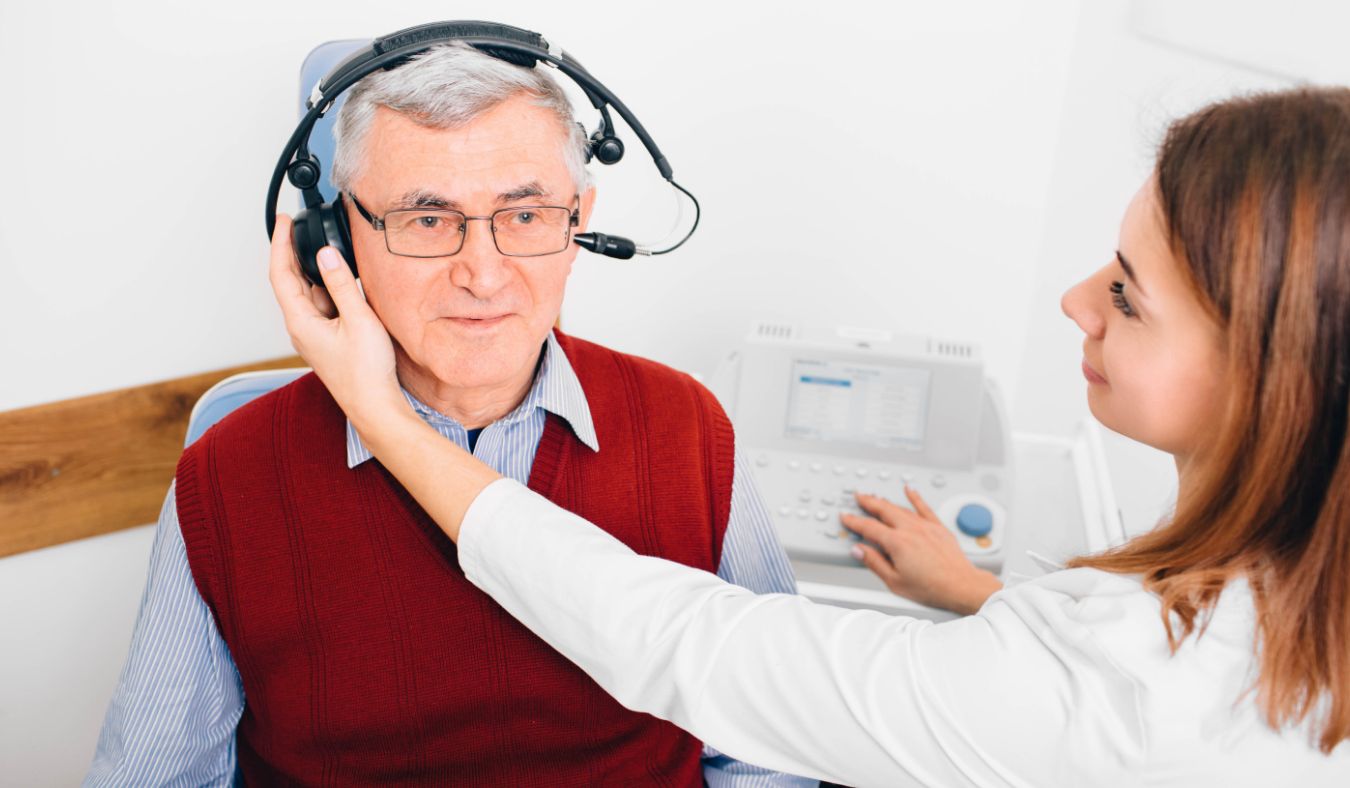Tips for Managing Hearing Aids During Fall Activities
Fall weather brings cooler temperatures, more time outdoors and changes in

By: admin | July 24, 2024
Hearing aids are a lifeline for people with hearing loss. Like any electronic device, they’re not best friends with water. A sudden splash or unexpected rain can leave you in a fix if your hearing aid gets wet. The solution isn’t always simple because it depends on the type of hearing aid you have and how much water it’s been exposed to. Some newer models have built-in water resistance, while others are more prone to damage from moisture. No matter what kind you have, knowing how to react may help keep your device in working order for longer.
It’s important to know how water impacts your hearing aids. It’s not just about dodging damage but also about keeping them working at their best. By understanding the effect of water on your hearing aids, you can make sure they last longer and perform better. This knowledge lets you take active steps in protecting your devices in wet conditions, ensuring your access to clear and uninterrupted sound.
Understanding the water resistance levels of hearing aids is crucial for maintaining their functionality and longevity. When choosing a hearing aid, it’s important to consider how well it can withstand exposure to moisture, whether from sweat, rain or accidental splashes. Here, we will explore the difference between water-resistant and waterproof hearing aids, the limitations of waterproof devices and the significance of their ratings.
Water-resistant hearing aids are designed to withstand small amounts of moisture. This means they can handle sweat, light rain or minor splashes without being damaged. However, they are not meant to be submerged in water. Water resistance helps protect the internal components from moisture-related damage, ensuring the hearing aids continue to function properly in everyday situations where they might encounter water.
The term “waterproof” suggests a higher level of protection against water. However, it is important to note that even devices labeled as waterproof are not meant to be submerged for extended periods or at significant depths. These hearing aids can handle more substantial water exposure, like brief immersion in water, but they are not entirely impervious to damage from prolonged or deep submersion. Waterproof hearing aids provide an extra layer of assurance for those with active lifestyles or those frequently exposed to wet conditions.
The water resistance and waterproof capabilities of hearing aids are often indicated by their IP (Ingress Protection) ratings. This rating system provides a standardized measure of how well the devices are protected against dust and water. An IP rating consists of two digits: the first digit indicates protection against solid particles, while the second digit specifies protection against liquids.
For example, a hearing aid with an IP68 rating has the highest level of protection against dust (6) and can withstand continuous immersion in water beyond 1 meter depth (8). Here are some common IP ratings for hearing aids and their implications:
If your hearing aid does get wet, the first step is not to panic! It’s crucial to act quickly and calmly. Start by turning off your hearing aid and taking out the battery. This step can help prevent further damage. Then, gently dry the device using a soft cloth or towel. Avoid using a hairdryer or other heating devices as they can cause more harm. If your hearing aid has a dehumidifying case, put it inside and leave it overnight. If you don’t have one, think about getting it as part of your hearing care kit for such emergencies. Finally, get in touch with your audiologist as soon as you can for further advice or assistance.
You might be curious why it’s so vital to remove the battery from your hearing aid after it has been exposed to water. This is a key step that can significantly affect the overall health and lifespan of your device. Water and electronics don’t get along well. When your hearing aid comes into contact with water, the moisture can cause a short circuit in the electronic components, including the battery. By swiftly removing the battery after water exposure, you’re effectively stopping any potential electrical flow that could cause further damage to these delicate parts.
Also, batteries themselves can be damaged by water. If left inside a damp hearing aid, they might corrode or leak harmful substances that could degrade other parts of your device. So, always make sure to take out the battery immediately if your hearing aid gets wet – this simple action could save you from more serious problems later!
Drying containers, often known as dehumidifiers, are specially designed tools that can help absorb moisture from your hearing aids, enhancing their lifespan and performance. These handy gadgets come in both electronic and non-electronic versions. Electronic dehumidifiers use heat to evaporate the water, while non-electronic ones use desiccants (materials that absorb moisture) to dry out your device. Whichever type you choose, it’s a good idea to have one at hand if you live in a humid climate or lead an active lifestyle. Being prepared is key when it comes to protecting your hearing aids from moisture damage!
You might be tempted to use a hair dryer as a quick fix for a wet hearing aid. However, this is not a good idea. The heat from the hair dryer can damage the delicate electronic components inside your hearing aid. It’s always safer and more effective to use designated drying methods like dehumidifying containers or drying capsules. These are specifically designed to safely remove moisture from your device without causing any harm.
If a hearing aid stays wet for too long, it can lead to serious damage. The moisture can corrode the electronic components, impairing their functionality and potentially leading to complete device failure. That’s why it’s so important to act quickly if your hearing aid gets wet – every minute counts in preventing irreversible damage! Remember, your audiologist is always there to help you with any concerns or issues related to your hearing aids’ care and maintenance.
How do you know when it’s time to seek expert help for a dampened hearing aid? One clear sign is persistent malfunctioning despite your best efforts at home care. Another sign is visible damage. If you notice any changes in the appearance of your hearing aid after it got wet – like discoloration or corroded parts – don’t hesitate to reach out to an expert. Such signs often suggest internal damage that requires professional attention.
Lastly, if your hearing aid was submerged in water for a long time or exposed to high humidity levels, it’s wise to get it checked even if it seems fine initially. Water can cause delayed issues that might not be apparent right away but could compromise the performance and lifespan of your device over time. In such cases, a quick check-up with your audiologist can give you peace of mind and ensure that your hearing aid stays in top condition for years to come.
Audiologists have the training and tools to effectively handle water-damaged hearing aids. These professionals use specialized equipment to dry and clean your hearing aids, reaching areas that may be hard for you to access at home. Additionally, they can thoroughly inspect your device for any internal damage caused by water exposure. This comprehensive check-up ensures that your hearing aid is not only physically clean but also fully functional and safe to use. Trusting the experts can save you time and stress while ensuring the best possible care for your valuable device.
Taking care of your hearing aid is an essential part of maintaining its functionality and longevity. It’s important to remember that prevention is always better than cure, especially when it comes to protecting your device from moisture.
There are several practical ways you can protect your hearing aids from moisture. First, always store your devices in a dry place when not in use, preferably inside a dehumidifying container. This will help absorb any excess moisture and keep them dry. Second, be mindful during activities involving water like bathing or swimming – consider removing your hearing aids beforehand to prevent accidental exposure. If you’re outdoors and the weather forecast predicts rain, carry protective covers or cases for your devices just in case. Lastly, regular cleaning of your hearing aids can also help prevent buildup of moisture over time. With these actionable tips at hand, you can confidently take charge of protecting your precious devices from the harms of moisture!
Knowing how to react when your hearing aid gets wet is important. Here are some key steps to keep in mind:
Understanding the importance of protecting your hearing aids from water damage is key to maintaining their longevity and performance. From swift action when they get wet, to regular maintenance and care, every step makes a significant difference. At Complete Hearing & Balance, we’re here to provide expert advice and assistance whenever you need it.
If your hearing aid has gotten wet or if you have any concerns about its care and maintenance, don’t hesitate to reach out to one of our convenient locations in Chehalis, Lacey or Olympia, WA, by calling (360) 704-7900. Our team is always ready to guide you through any issues related to your device’s functionality or performance. We understand how important these devices are for your daily life – that’s why we’re committed to helping ensure they stay in top condition for years to come.
Tags: hearing aid basics, hearing aid repair, hearing aid styles

Fall weather brings cooler temperatures, more time outdoors and changes in
By: admin | November 18, 2025

Beach trips are supposed to be relaxing, but when you wear hearing aids, a
By: admin | September 24, 2025

Sudden changes in hearing can be surprising and may affect how you go
By: admin | June 2, 2025
